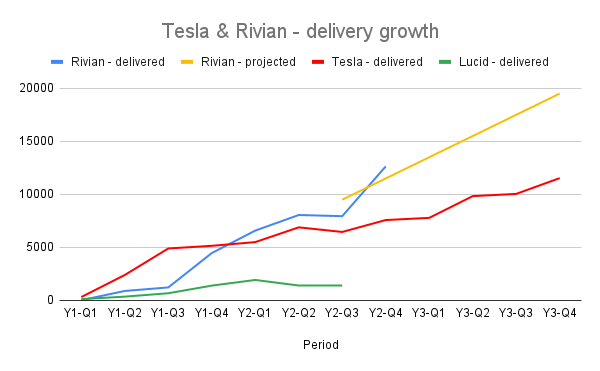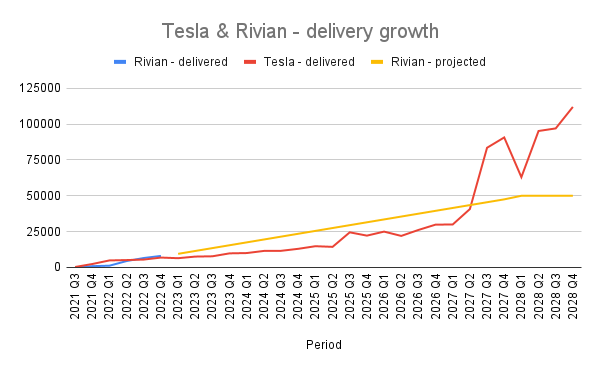
I’m very happy to say that earlier this year my wife and I finished electrifying our home and became a carbon-free household. We have gotten rid of all our natural gas appliances, and solar panels provide the power for our core electrical needs. Furthermore, we’ve signed up for a program so that all the electricity we need in excess of what our solar panels provide comes from clean energy sources.
Here’s what’s even better – electrifying all of these appliances has made for an objectively better home. Our home is a better living environment because we’ve upgraded each appliance – the fact that we’re doing our part to reduce CO2 emissions, the fact that we got a bunch of rebates in the process, and the fact that we’re going to have lower utility bills are great side benefits.
I’m going to use this blog to talk about our journey in going carbon-free. For more general advice, I’d strongly recommend checking out the materials from a non-profit called Rewiring America. They have a guide to “Electrify Everything in Your Home” that’s a fantastic resource.
I want to give particular thanks to Diane and Eric of emeraldECO. They served as consultants, advisors, and a general contractor for us for our entire electrification journey. If you’re on the Peninsula in the SF/Bay Area and want to electrify your home, I’d strongly recommend that you reach out to them. They were upfront with us about trade-offs, made recommendations that turned out to be very smart and valuable, and have made sure we’re getting all the possible rebates and benefits from the work.
In the coming days/weeks I plan on writing more about each part in electrifying a home, but here are the core building blocks that cover electrification. Please subscribe (in the blog sidebar) to get future posts by email.
Building blocks to electrifying our home
Electrical panel / Infrastructure
Our home is over 70 years old, and we needed to upgrade it from a 100 Amp panel to a 200 Amp panel. And because of renovations on our house over the years, this meant we needed to relocate where the wires from PG&E connected to our home.
Solar Panels
The previous owner of our home had contracted with Sunrun to lease solar panels, which we took over when we purchased our home. (I had previously purchased solar panels for our previous home; there are some trade-offs when considering leasing versus purchasing.) We’ve got a ~6kW system, which in the summer generates 33+ kWh/day and in the winter generates ~12 kWh/day.
Induction Range
We got rid of a gas range for an electric induction range. The experience has been fantastic. Induction ranges heat up incredibly quickly and have immediate and precise temperature control. What’s more is that it’s so much safer than a gas stove – my wife and I are far more willing to let our daughter cook on the induction range unsupervised (or lightly supervised), where that was never the case with our old gas range.
Heat Pump Water Heater
Fundamentally a water heater is a pretty simple appliance. But by upgrading to a heat pump water heater, we’ve gotten some great features like precise control over water temperatures, the ability to set schedules and preferences for when our water heater operates, etc. And it removes another source of burning gas from our home.
Heat Pump HVAC
Upgrading our furnace and A/C to a heat pump has been a massive win. Some of this is because our HVAC installer ensured that we had the correctly-sized air returns and ducting to support our home. Part of this was because our old A/C unit was on its last legs and barely provided any cooling at all.
The engineer in me loves the efficiency gains that come from heat pumps: instead of burning gas to heat the air, it just moves the hot air it captures from the outdoors to warm the air instead. Moving hot air requires FAR less energy than generating heat.
Electric Vehicle and EV Charger
We long wanted to get an electric vehicle, and got our Rivian R1S in May of 2023. As part of this whole project we wired in an EV Charger so we can charge our car at home (typically overnight) instead of ever going to a gas station. It’s a Level 2 charger (240V with a 60Amp breaker, with 48Amps continuous power).
The whole experience of owning and driving an electric vehicle has been transformative. Our Rivian has instant acceleration, is incredibly smooth, is super quiet, and just incredibly fun to drive.
Home Battery
Some people choose to install home batteries (like Tesla Powerwalls), but we chose not to. They’re pretty expensive, and we didn’t have a great place to physically locate it. Power outages happen in our neighborhood a couple times a year, but rarely last long enough for the math on a home battery to make sense.
Plus… the battery in our Rivian is roughly the size of 10 Tesla Powerwalls. Rivian has said they’re developing a new charger that will allow users to power their home from their Rivian. I definitely plan on purchasing that when available because the benefits in that case will most certainly make sense.
Clothes Dryer
I’m adding this for the people who read this who might have a gas-burning clothes dryer. (Apparently about 10% of Americans?) There are varying levels of efficiency in dryers, so pick the one that offers the best balance of electrical efficiency and performance that’s right for you.




